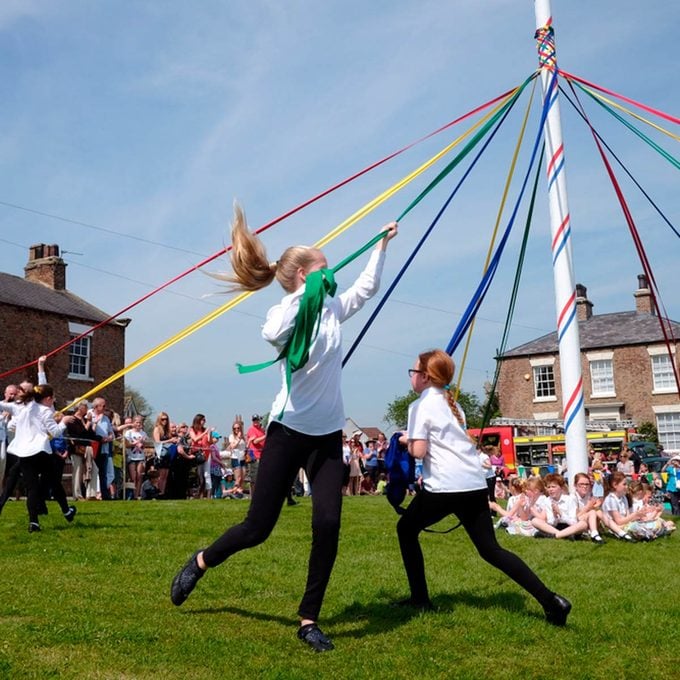Every year on May 1, dancers weave ribbons around a maypole. But why?
What is a Maypole and Why Do People Dance Around It?

Every year, you can celebrate the first day of May by watching dancers weave ribbons around a maypole. This tradition dates back centuries and is as woven in origin theories as the ribbons themselves. So what is the history of the maypole, and why do we still celebrate this festive holiday by dancing around it?
On This Page
A Brief History
The tradition spans multiple regions with historical evidence tracing it to Rome, Western Europe, India, Latin America and Northern Africa. Historians may disagree on where and when it was first introduced, but there’s ample proof that it links back to pagan rituals in Germany around the 13th century.
Over time, the tradition likely spread and served either as a celebration of spring (or MidSummer in Scandinavia) or fertility for the season to come. What better way to celebrate the changing season, and the good fortune it would bring, than by dancing, singing and feasting underneath a colorful maypole? Plus, what is a May basket and why do people hang them on doors?
The Meaning of the Maypole
Originally, the maypole was a living tree. Over time it usually became a tree trunk of the correct height, age, and type (usually pine or birch). Some say that the tree represented masculine energy, and the ribbons and floral garlands that adorned it represented feminine energy.
Those ribbon-weaving dancers are either pairs of boys and girls (with girls taking one color of ribbons and boys the other), or a group of multiple ages where younger dancers take the inside of the circle and older dancers the outside. Either way, the maypole itself is a splendid reminder that spring has sprung and rebirth has begun.
The Tradition Today
Given that May Day celebrations are all about expressive dancing and celebrating, the Puritans in 16th and 17th century New England labeled the rituals bacchanalian, which naturally led to fewer celebrations during that time.
But luckily May Day celebrations made their way back into the modern era and remain a symbol of the wondrous shift from the dreary cold season to the lively warmer one. You can find today’s most dedicated revelers in Scotland and Ireland, where they recognize Beltane or Gaelic May Day, or the United Kingdom and Bavaria in Germany, where the maypole is painted in their region’s white and blue and adorned with representations of the local craftspeople and trades.
You can also find festivities on this side of the pond as well. To partake in this year’s celebrations, find out if your community or your child’s school has a festival. Or start a new tradition yourself in your neighborhood!




















